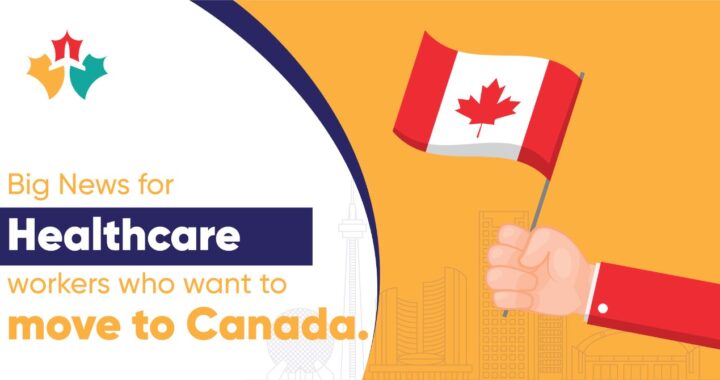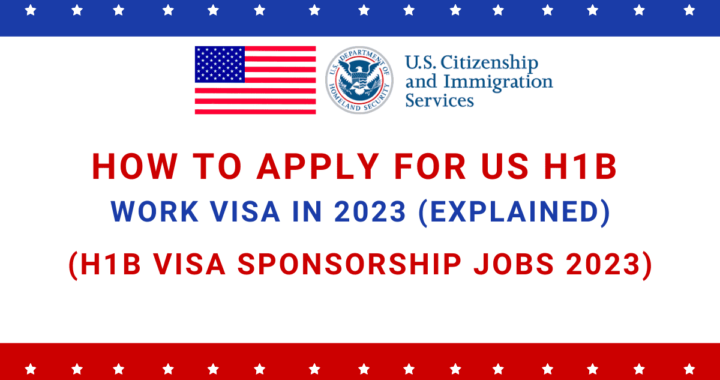Withholding of Removal from Canada-How to Apply-Appeal against refusal of Withholding of Removal

Withholding of removal from Canada-How to Apply-Appeal against refusal of Withholding of Approval
“Withholding of removal” is a type of protection that is granted to individuals who are not eligible for refugee status but who are also unable to return to their home country due to a risk of persecution or harm. This protection is granted by the Canadian government to individuals who meet certain criteria under the Immigration and Refugee Protection Act (IRPA).
Persons eligible for Withholding of Removal may apply for Work-Permit to Work in Canada
A work permit, on the other hand, is a document that allows an individual to work legally in Canada for a specific period of time. In some cases, individuals who have been granted withholding of removal may also be eligible to apply for a work permit, which would allow them to work and support themselves while they remain in Canada.
However, it is important to note that the rules and requirements for obtaining a work permit while under withholding of removal status can be complex and may vary depending on individual circumstances. It is recommended to consult with an immigration lawyer or a qualified immigration consultant for more information and guidance.
To be eligible for withholding of removal in Canada, an individual must meet the following criteria:
Risk of persecution:
The individual must demonstrate that they are at risk of being persecuted in their home country. This persecution can be based on their race, religion, nationality, political opinion, or membership in a particular social group.
Risk of serious harm:
The individual must also demonstrate that they are at risk of being subjected to serious harm if they are returned to their home country. This harm can include torture, cruel or unusual punishment, or a risk to their life or physical integrity.
No safe third country:
The individual must demonstrate that they do not have access to a safe third country where they could seek protection.
Admissibility:
The individual must meet the admissibility requirements for Canada, which includes not being inadmissible for reasons such as criminality or security concerns.
The application process may also involve providing evidence to support the individual’s claim for protection and attending a hearing before the Immigration and Refugee Board (IRB) of Canada.
Process to Apply for Withholding of Removal
The process for applying for withholding of removal in Canada can be complex and may involve several steps. It is important to note that the following information is for general guidance purposes only and should not be considered legal advice. It is recommended to seek the assistance of a qualified immigration lawyer or consultant for guidance on how to apply for withholding of removal.
Step 1: Determine eligibility
The first step in the process of applying for withholding of removal in Canada is to determine if you are eligible for this form of protection. As mentioned earlier, you must demonstrate that you are at risk of persecution or serious harm if you are returned to your home country and that you do not have access to a safe third country where you could seek protection. You must also meet the admissibility requirements for Canada.
If you believe that you meet these criteria, you can proceed to the next step.
Step 2: Gather supporting documentation
To support your claim for withholding of removal, you will need to gather supporting documentation. This can include:
- Personal identification documents, such as your passport or birth certificate.
- Documents showing your immigration status in Canada, such as your visa or work permit.
- Evidence of the risks you face in your home country, such as news articles, reports from human rights organizations, or statements from witnesses.
- Evidence of your ties to Canada, such as proof of residence, employment, or family relationships.
- Any other documents that may support your claim for protection.
It is important to note that the type of documentation required may vary depending on your individual circumstances. It is recommended to consult with a qualified immigration lawyer or consultant for guidance on what documents to provide.
Step 3: Complete the application form
The next step in the process is to complete the application form for withholding of removal. This form is called the “Application for a Pre-Removal Risk Assessment” and can be found on the website of Immigration, Refugees and Citizenship Canada (IRCC).
When completing the form, you will be asked to provide personal information, information about your claim for protection, and information about your ties to Canada. You will also be asked to provide any supporting documentation that you have gathered.
Step 4: Submit the application and attend the hearing
Once you have completed the application form, you will need to submit it to the IRCC along with any supporting documentation. You will also need to pay the application fee, which is currently $550.
After the IRCC receives your application, they will review it and schedule a hearing before the Immigration and Refugee Board (IRB) of Canada. The purpose of the hearing is to determine whether you are at risk of persecution or serious harm if you are returned to your home country.
During the hearing, you will have the opportunity to present evidence in support of your claim for protection. You will also be asked questions by a member of the IRB who will assess your claim for protection.
Step 5: Receive the decision
After the hearing, the IRB will issue a decision on your claim for protection. If the IRB finds that you are at risk of persecution or serious harm if you are returned to your home country, they may grant you withholding of removal.
If withholding of removal is granted, you will be allowed to remain in Canada and will not be removed to your home country. However, it is important to note that withholding of removal is not permanent and may be reviewed at a later date.
If the IRB does not grant you withholding of removal, you may have the opportunity to appeal the decision. It is recommended to consult with a qualified immigration lawyer or consultant for guidance on the appeal process.
Circumstances under which Withholding of Removal be denied?
The process for applying for withholding of removal in Canada can be complex and may involve several steps. It is important to determine if you are eligible for this form of protection,
Withholding of removal may be denied if the applicant fails to meet the eligibility criteria or if the Immigration and Refugee Board (IRB) finds that the applicant does not face a risk of persecution or serious harm if they are returned to their home country. Here are some circumstances in which withholding of removal may be denied:
Ineligibility:
The applicant may be found ineligible for withholding of removal if they do not meet the eligibility criteria, such as failing to demonstrate that they face a risk of persecution or serious harm if they are returned to their home country.
Failure to provide sufficient evidence:
If the applicant fails to provide sufficient evidence to support their claim for protection, their application for withholding of removal may be denied. It is important for the applicant to provide as much documentation and evidence as possible to support their claim.
Safe third country:
If the IRB finds that the applicant has access to a safe third country where they could seek protection, withholding of removal may be denied. A safe third country is a country where the applicant would not face a risk of persecution or serious harm.
Criminality or security concerns:
If the applicant is found to be inadmissible to Canada due to criminality or security concerns, their application for withholding of removal may be denied.
Changes in the country of origin:
If the situation in the applicant’s home country changes and they no longer face a risk of persecution or serious harm, withholding of removal may be denied.
Lack of credibility:
If the IRB finds that the applicant lacks credibility or is not truthful in their testimony, their application for withholding of removal may be denied.
It is important to note that the circumstances in which withholding of removal may be denied can vary depending on the individual case. It is recommended to seek the assistance of a qualified immigration lawyer or consultant for guidance on how to prepare a strong application for withholding of removal.
Can One appeal against order of denial of Withholding of Removal
Yes, you may be able to appeal a denial of withholding of removal by the Immigration and Refugee Board (IRB) of Canada. If your application for withholding of removal is denied, you will receive a written decision explaining the reasons for the denial. The decision may also include information on your right to appeal.
In most cases, you will have 15 days from the date of the written decision to file a Notice of Appeal with the Federal Court of Canada. This notice must be filed in writing and should include the reasons why you are appealing the decision. It is important to note that there may be additional requirements and deadlines that must be followed in order to successfully appeal a decision.
Once you file a Notice of Appeal, the Federal Court of Canada will review the decision made by the IRB. The Court will not make a new decision on your application but will review the decision made by the IRB to ensure that it was made in accordance with the law and the facts of your case. The Court may uphold the decision, overturn the decision, or send the case back to the IRB for further consideration.

 What actions by Trump Government are in store for illegal immigrants in US? What are Challenges to deport illegal immigrants from US?
What actions by Trump Government are in store for illegal immigrants in US? What are Challenges to deport illegal immigrants from US?  What are changes in Canada Start up Visa Program and Self-Employed Persons Program. How would it affect the potential immigrants to Canada?
What are changes in Canada Start up Visa Program and Self-Employed Persons Program. How would it affect the potential immigrants to Canada?  Launch Your Dreams: A Guide to Canada’s Start-Up Visa Program for Global Entrepreneurs
Launch Your Dreams: A Guide to Canada’s Start-Up Visa Program for Global Entrepreneurs  Options for Immigrating to Canada as a Healthcare Worker- Best Canadian Provinces that offer good salaries
Options for Immigrating to Canada as a Healthcare Worker- Best Canadian Provinces that offer good salaries  Immigrating to Quebec province Canada- Professions in demand with salaries- Racial Discrimination
Immigrating to Quebec province Canada- Professions in demand with salaries- Racial Discrimination  H1B Visa- Eligibility Requirements- its Duration- Process to apply and Professions in demand
H1B Visa- Eligibility Requirements- its Duration- Process to apply and Professions in demand  Recent Changes to Canada’s Work Permit Rules and its impact on Immigrants from India
Recent Changes to Canada’s Work Permit Rules and its impact on Immigrants from India  Applications for UK Immigration witness major decline as the Immigration Laws undergo significant changes
Applications for UK Immigration witness major decline as the Immigration Laws undergo significant changes